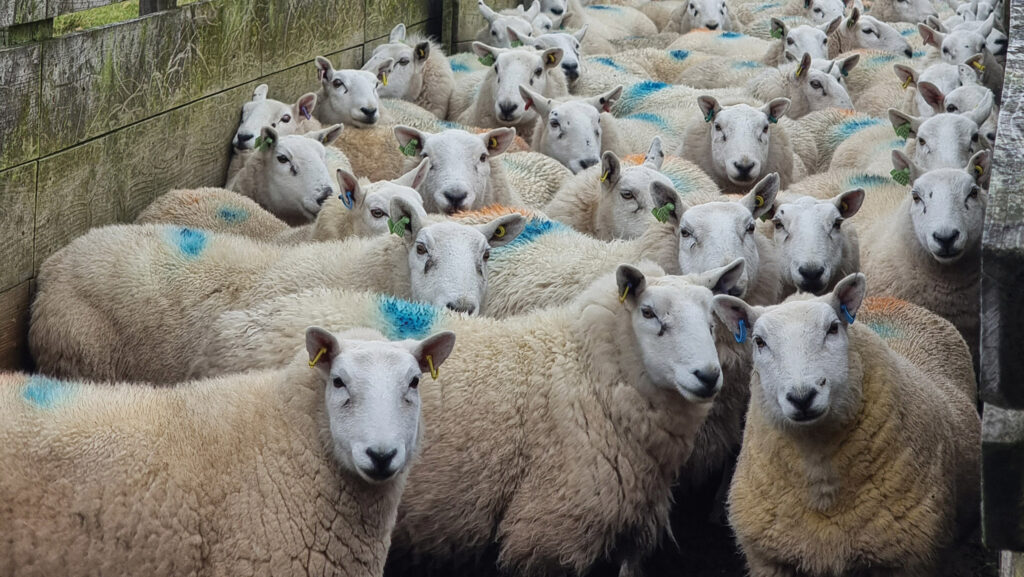Why there’s still time to target ewe condition before tupping
 © Rebecca Duncan
© Rebecca Duncan Lean ewes that were body condition scored post-weaning and moved onto a better diet should now be gaining weight steadily before tupping to reach a target body condition score of 3 to 3.5.
Ideally, ewes are weaned at this score and maintain this condition into tupping and throughout the year.
See also: Why keeping ewes in tip-top condition can help save on wormers
However, there is still time for flocks to identify any thin ewes and separate them from the main flock for preferential grazing on the best paddocks, according to sheep consultant Emily Grant of Forrit, based in Perthshire.
If there are ewes at a score of 3-3.5, they can be held at maintenance levels until rams go in.
She suggests it is still worthwhile running a hand over ewes again pre-tupping, to confirm whether thin ewes have put on enough condition for breeding.
Ewes underweight at this time require further investigation. “It could be because of an underlying health issue, they have lost teeth, or there is a lack of pasture quality or quantity,” she says.
Low scan risk
Depending on numbers, one or two animals could be pulled out if cull ewe prices are good.
But if there is a larger proportion of the flock below target score, Emily warns it is important to change management because these animals are at risk of a low scanning percentage, reduced lamb survival and lower lamb weaning weight.
“They won’t be able to support a pregnancy through winter, produce sufficient colostrum, or milk after lambing,” she explains. “Preferentially feeding them now will be fine if they are below target 3.”
Farms that are still tight for grazing this autumn could sell store lambs, rather than finishing them, to reduce pressure on feed stocks, she suggests.
For those with a September flush of grass growth, this will provide better quality forage, of a higher energy content, than either silage or hay.
Supplementing with hard feed is of marginal cost benefit because of the expense. Instead, Emily suggests alternatives such as beet pulp should be considered.
Case study: The Duncan family, Blairfad, Scotland
Shona and Bruce Duncan say they have targeted lean ewes before they get thin and put them onto reseeds or silage aftermath grazing this year at their two lowland farms.
The family business covers 505ha (1,250 acres) and runs 2,300 sheep in three flocks on the edge of the Trossachs National Park, near Stirling.
As a Quality Meat Scotland monitor farm, they hosted a weaning meeting with consultant Emily Grant this summer.
The flock at Blairfad comprises 550 ewes (a mix of Cheviots, Mule types and Cheviot Mules), weaned in mid-August, at 100 days, for store sales to Stirling markets.
“Our Cheviots were on the lean side six to eight weeks pre-lambing, but they lambed well,” says Shona.
“We learned it is better to maintain body condition, not try to flush them. Our scanning percentage of 180% is fine – we don’t want it over 200% as we would get too many triplets.”
Bruce adds that they have also reseeded about 20ha (50 acres) this year with ryegrasses and the flock rotationally grazes the farm. In addition, kale was drilled on 3.6ha (9 acres) for winter keep, which will be followed by grass.
“The kale looks good and has grown through any pest damage. It will be strip grazed through Christmas and the new year by 200 ewes over four to five weeks,” he says.
